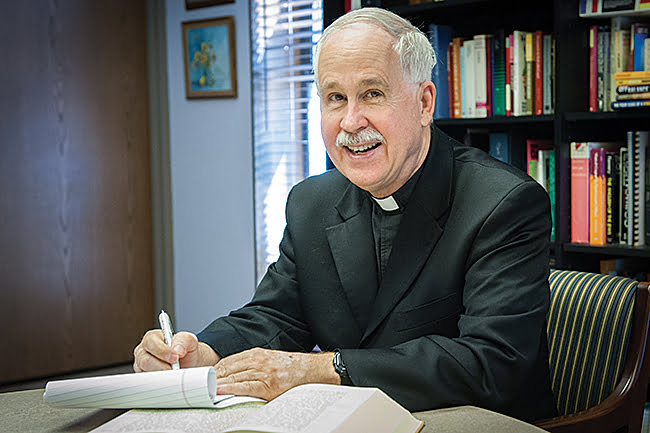
Father Mike Stubbs is the pastor of Holy Cross Parish in Overland Park and has a degree in Scripture from Harvard University.
by Father Mike Stubbs
Skeletons discovered in 2016 at a 2,000-year-old site in Israel could reveal who wrote the Dead Sea Scrolls.
They appear to be skeletons of males aged between 2 and 50, when they died. Scholars believe that these men belonged to a Jewish monastic group living on the shore of the Dead Sea, close to where the scrolls were found, at Qumran.
Interestingly enough, John the Baptist preached and performed baptisms in the Jordan River, at a site not far from Qumran.
Is it possible that John had any connection to the Essenes, or even had at one time belonged to them? His preaching echoes what we read in the Dead Sea Scrolls. The Essenes took part in ritual baths for spiritual purification.
In any case, John’s identity appears as a matter of concern in Sunday’s Gospel reading, Jn 1:6-8, 19-28:
“When the Jews from Jerusalem sent priests and Levites to him to ask him, ‘Who are you,’ he admitted and did not deny it, but admitted, ‘I am not the Christ.’ So they asked him, ‘What are you then? Are you Elijah?’ And he said, ‘I am not.’ ‘Are you the Prophet?’ He answered, ‘No.’ So they said to him, ‘Who are you, so we can give an answer to those who sent us?’”
In response, John consistently deflects attention away from himself. Instead, he directs attention toward the one among them whom they do not recognize, the Messiah.
In fact, he tells them that his reason for his performing baptisms is to reveal the Messiah to them: “The reason why I came baptizing with water was that he might be made known to Israel” (Jn 1:31).
We remember that at the moment of Jesus’ baptism at the hands of John the Baptist, the heavens are opened, the Spirit descends upon Jesus and a voice from heaven proclaims that Jesus is the Son of God.
For the Gospel of John, this purpose of John’s baptizing — to reveal Jesus as the Son of God — supersedes any explanation of John’s baptizing for the forgiveness of sin, as proposed in the Gospels of Matthew, Mark and Luke.
In John’s Gospel, John the Baptist exists only to point to Jesus. That is why, later on, John will point out Jesus to the first disciples of Jesus: “The next day, John was there again with two of his disciples and as he watched Jesus walk by, he said, ‘Behold, the Lamb of God’” (Jn 1:35- 36).
John wishes them to recognize Jesus’ true identity.
He wishes the same for us.

